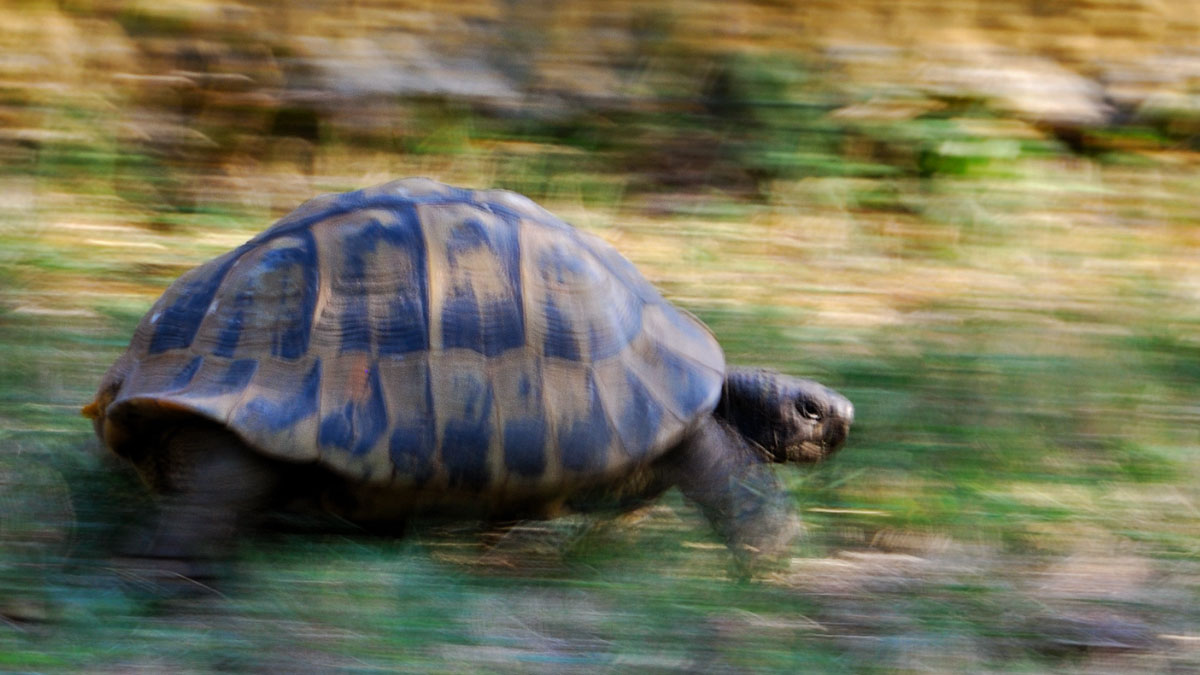How Fast Can A Tortoise Run – The Surprising Speed of a Slow Animal
Tortoises are notorious for their slow gait and it’s rare to see one running, at least not in the literal sense. However, circumstances like threats from predators and competition for food may make them pick up speed.
So you may be curious, just how fast can a tortoise run? A tortoise’s top speed typically depends on the species and individual factors. That said, most would hit 0.05 m/s to 0.13m/s or 0.13 mph to 0.3 mph. Generally, giant tortoises are slower than smaller tortoises species that are used to pacing around.
Let’s dig deeper into how fast tortoises can run, as there are a few surprises waiting for you. We’ll also list factors affecting their speed and make a comparison to other slow-moving animals.
How Fast Can A Tortoise Run?
Contents
You may be used to the slow and steady pace of your tortoise. Even at that, this slow animal can “sprint” at up to 0.3 mph.
The species type largely determines how fast your tortoise can run. For instance, a Galapagos tortoise would do 0.072 m/s, while a Russian tortoise can run 2.2 m/s.
However, the official record for the fastest tortoise on land goes to Bertie, a Leopard tortoise at Adventure Valley, Brasside, UK. He ran a 5.48-meter course at a speedy 19.59 seconds. That makes it 0.28 m/s, the greatest official speed achieved by a tortoise.
Nevertheless, Bertie is only as fast as per the official Guinness World Record. There are unusually fast tortoises out there, as depicted in this video of a tortoise running fast. In fact, some sources say Egyptian and Russian tortoises can do 2.2 m/s, way faster than Bertie’s record.
As said earlier, speed depends on the tortoise species. So, let’s do a rundown of the most popular tortoise species and their top speed.
| Tortoise Species | Speed of Tortoise In m/s | Tortoise Speed km/h |
|---|---|---|
| Leopard Tortoise | 0.28 (Official record) | 1 |
| Galapagos Tortoise | 0.072 | 0.26 |
| Aldabra Tortoise | 0.134 | 0.5 |
| Red-Footed Tortoise | 2.2 | 8 |
| Yellow-Footed Tortoise | 2.2 | 8 |
| Egyptian Tortoise | 2.2 | 8 |
| Greek Tortoise | 2.2 | 8 |
| Radiated Tortoise | 0.14 | 0.5 |
| Indian Star Tortoise | 0.14 | 0.5 |
| Sulcata/African Spurred Tortoise speed | 0.135 | 0.5 |
| Hermann’s Tortoise | 2.2 | 8 |
| Gopher Tortoise | 0.134 | 0.5 |
It’s evident that there are faster tortoise species than the Guinness Book record holder. However, these tortoises would rarely do 2.2 m/s unless the circumstances really call for it.
Factors Affecting A Tortoise Speed
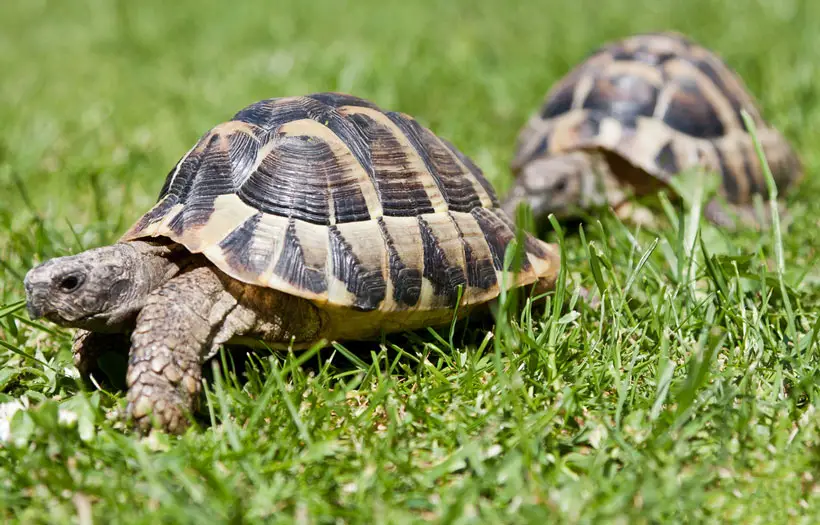
The three primary factors affecting a tortoise’s speed are:
- Physical characteristics: The size and weight of a tortoise will generally affect its speed. Essentially, larger and heavier tortoise species tend to be slower than smaller ones.
- Environmental factors: A study on the Aldabra tortoise indicates that temperature can influence the activity of tortoises. Desert tortoises, for example, live in the hottest habitat of any tortoise species.
And they have adapted to conserving water and minimizing their activity during the hottest parts of the day.
- Behavioral factors: Age and health can impact your tortoise movement. Older and less healthy tortoises would typically move slowly. Moreover, their willingness to move or explore can also affect their speed.
Why Are Tortoises Slow?
The slow gait of a tortoise is largely due to a combination of physiological and physical factors. Also, ecological niches, feeding habits, and adaptation for survival contribute to their slow movement.
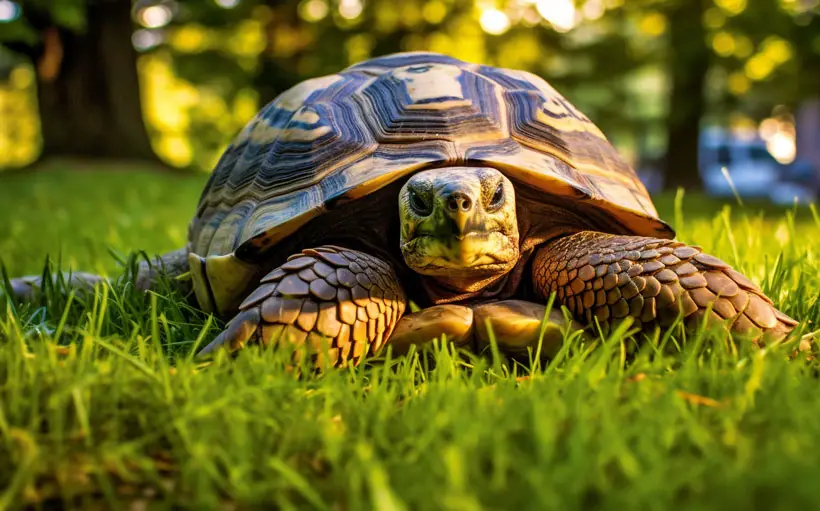
Physiological Factors
Generally, tortoises have a slow metabolism. In that regard, tortoises tend to burn energy at a slower rate than other animals, resulting in slower movement. Plus, some tortoise species have biological mechanisms that slow down activity, which explains their long lifespan.
Physical Characteristics
It would interest you to know that the unique limb structure of a tortoise significantly limits its movement capabilities. Because of its rigid body, a tortoise would rely entirely on its appendicular system for locomotion. This imposes constraints on its movement.
A tortoise’s bulky abdominal viscera also limits its trunk flexibility. As such, they have to elongate their limbs to achieve stride length. This stretched-out feet placement makes it difficult for your tortoise to move quickly on all fours over land.
The muscular system of a tortoise is also to blame for its slow gait. Unlike most vertebrates, a tortoise’s backbone doesn’t have the muscle for twisting and flexing, which limits their movement.
Adaption For Survival
A tortoise has a tough shell and protective scales to protect against predators. Plus, they can fully retract into their shell for protection. As such, a tortoise doesn’t need to move quickly to escape predators.
Ecological Niche and Feeding Habits
Tortoises are herbivores with a specialized diet that requires them to move slowly to find the plants they need to survive. They don’t have to chase after prey to obtain food.
How Fast Can A Tortoise Run In A Day?
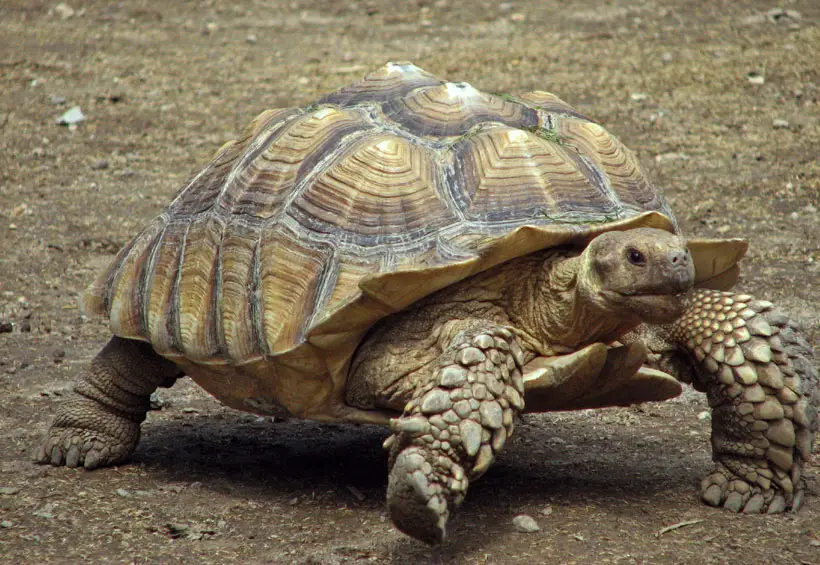
A tortoise can’t maintain a top speed for long. So, they won’t be able to sustain the average top speed of 0.3 mph for 24 hours.
So, the best we can do is to calculate the theoretical distance. That will be 24 x 0.3, which equals 7.2 miles or 11.6 km. Therefore, a tortoise would, at best, run 11.6 km in 24 hours if it were to maintain a top speed.
Nevertheless, there are real-life examples. A good example would be Freddie, a 70-year-old tortoise. This British tortoise did 6 miles in 24 hours. That’s an impressive quarter mile an hour. So, our calculation of 7.2 miles in 24 hours is not so far-fetched.
Tortoise Speed In Water
What we’ve looked at so far is a tortoise’s top speed on land. But you may be curious just how fast this slow animal can move in the water.
As it turns out, the slow-moving nature of a tortoise translates to their movement in the water. A tortoise’s dome-shaped shell and short, sturdy feet are largely to blame for its lack of speed in the water.
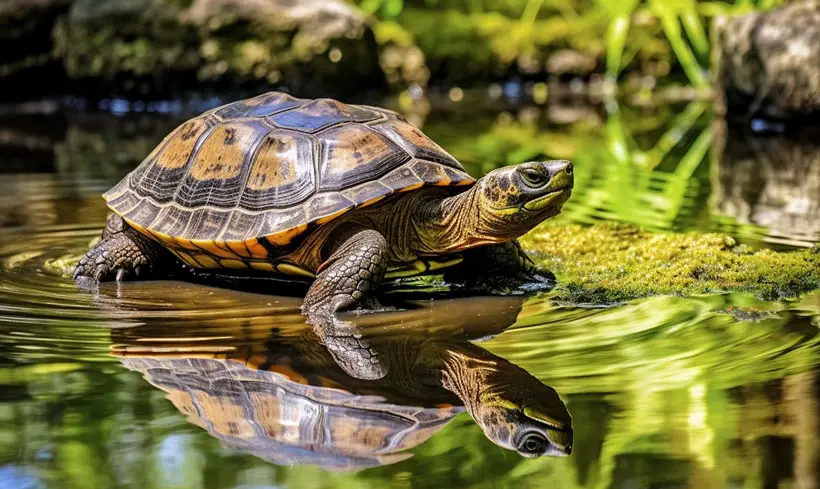
While some species of tortoises can swim, they don’t have the physiological traits of turtles to swim efficiently. Oftentimes, they would float and drift, leaving them at the mercy of the water current.
It’s true that some species, such as the Galápagos tortoise, have adapted to their environment and developed specific swimming techniques to move efficiently in water.
Even at that, their swimming performance is still limited compared to other aquatic animals like sea turtles, with a cruising speed of only 0.2-0.5 km/h.
Comparison of Tortoise’s Speed with Other Animals
When you compare it to other animals, a tortoise is among the slowest. For example, a soft-shelled turtle can do 3 miles per hour on land. This is much faster than the average speed of a tortoise.

However, tortoises compensate for their lack of speed with endurance. In fact, research shows that slower, steadier animals tend to cover more distance over time. This makes tortoises more efficient than faster animals.
| Animal | Top Speed On Land |
|---|---|
| Sloth | 0.27 km/h |
| Garden snail | 0.048 km/h |
| Loris | 1.9 km/h |
From the table, we can conclude that tortoises aren’t entirely the slowest. They can beat the garden snail and a sloth. Also, most species would outrun a loris.
FAQs
Here are popular questions related to how fast a tortoise can run.
Yes. The weight of a tortoise’s shell can significantly impact its speed. According to a study, the shell can be as much as 39.4% of the tortoise’s body weight. Walking with the burden of such a hefty load can slow down the tortoise’s mobility.
You can make your tortoise run faster by enticing it with a special treat. A good trick would be to put strawberries some distance from the tortoise so it can make a run for it.
A male tortoise would typically exhibit more movement and faster locomotion during the breeding season. For instance, males would normally approach females with fast movements.
Conclusion
Tortoises aren’t built for speed and agility. Even at that, they can manage an average running speed of 0.3 miles per hour. Smaller species are faster than that, while giants are limited to a slow crawl.
Factors like the environment, physical characteristics, and the situation can affect a tortoise’s speed. For instance, if a tortoise senses danger, it may speed up its movement and make a run for it. They have adapted to their surroundings and have their own unique strengths and abilities.

